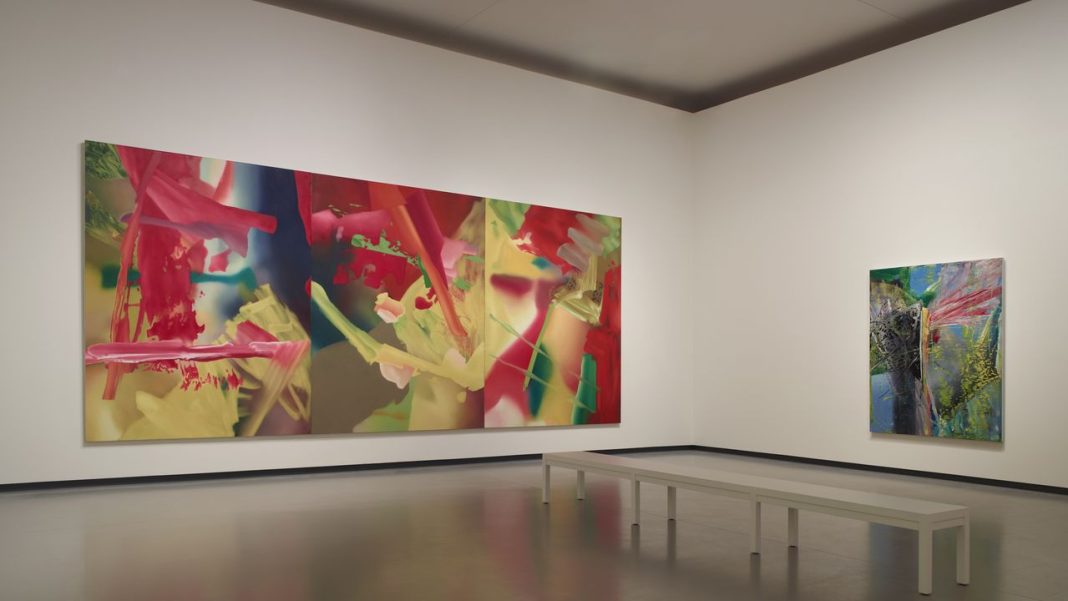Essentially, Richter spent a lifetime interested in “the relationship we have with reality,” as he has put it, without ever starting with reality, and without ever embellishing the process or context. All of the characteristically blurred portraits—including his own in 1996—he painted from photographs. He called his swirl of chromatic lacquer on Plexiglass, which has a marbling effect, Flow, and a series of abstract paintings Abstract Paintings. Among the most impressive for its size alone is Stroke (on Red), which runs the length of a large wall and contains what looks like one extended and enlarged yellow brushstroke on a speckled red backdrop, but is really the work of highly precise small ones.
“He stretched—literally stretched—the language of painting,” says Nicholas Serota, who was director of the Tate when the museum mounted its own Richter retrospective in 2012, which Serota curated with Dieter Schwarz.
Richter, he adds, is “not just rendering an image, but carrying forward memory and the passage of time between the moment a photo was taken and when it was painted.”
This was certainly the case with the portrait of his daughter, Betty, painted in 1988 from a photo taken in 1977, and Lesende [Reader], portraying his wife at the time, Sabine Moritz-Richter. Richter doesn’t intervene on either scene; instead it’s the hazy, glowing light on their hair or in the textures of their clothes that establish a remarkable connection.
#Closer #Magnificent #Gerhard #Richter #Show #Fondation #Louis #Vuitton



